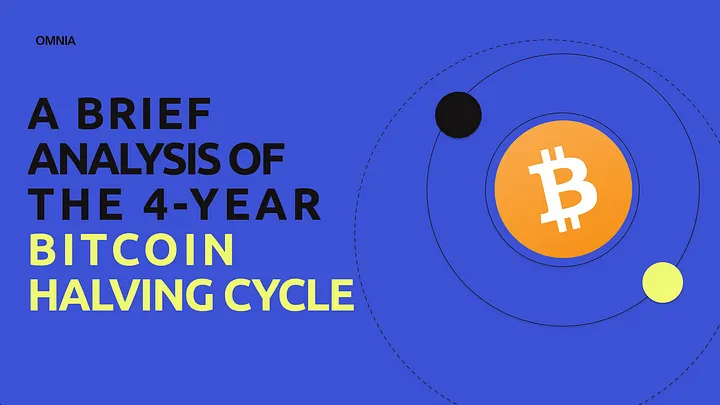
A Brief Analysis of the 4-year Bitcoin Halving Cycle.
It has been a rollercoaster ride in the Bitcoin markets for the last few months after BTC hit an all-time high of $69k in early November 2021, only to dip by 74.4% to a local low of $17,600 in mid-June 2022. Anyone who got into the crypto-verse in 2021 is undoubtedly wondering what they got themselves into and whether it is worth holding until the market environment improves.
When in Doubt, Always Remember Bitcoin’s Fundamentals.
It is often said that bear markets make the best traders. In the case of Bitcoin and other cryptocurrencies, drawdowns in the markets, such as the one being experienced now, are an opportune time to reevaluate investments using basics, also known as fundamentals.
This same approach was recommended by MicroStrategy’s CEO and Bitcoin Perma-bull Michael Saylor when he explained that BTC’s near-term volatility is irrelevant once you understand its fundamentals. Mr. Saylor reiterated the same during a Tucker Carlson interview on Fox News, where he said the following:
Bitcoin is the most certain thing in a very uncertain world. You know…in a market full of chaos and fury, people need a safe place to stand apart from the intervention of a government or an agency or a corporation.
So, Bitcoin represents a fair, open, equitable network with a very simple promise to anyone who wants to join, which is what you own is yours and no one will take it away from you.
Bitcoin’s fundamentals are unique in the sense that they are embedded in its code and include the following:
- A capped supply of 21 million Bitcoin with roughly 19 million BTC already mined. This, in turn, brings in the concept of scarcity, unlike popular commodities such as gold and oil, which have no known fixed supply.
- Bitcoin’s halving cycle which cuts the BTC mining rewards by half every 210,000 blocks or roughly every four years. The event cuts in half the rate at which new Bitcoins are released into circulation while at the same time keeping in mind the earlier mentioned hard cap of 21 million.
Bitcoin’s 4-Year Halving Cycle.
Since its launch in 2009, Bitcoin has had three halving events:
- November 18th, 2012
- July 9th, 2016
- May 11th, 2020
Historically, each halving event has positively impacted the price of Bitcoin as investors speculate on how BTC’s production rate, being cut in half, will affect its long-term value.
This phenomenon has been visualized in the following Bitcoin Rainbow Chart, which also provides a color code for would-be investors to determine potential zones to buy or sell BTC. The chart also highlights Bitcoin’s next halving, estimated between February and June 2024.
Inflation and the Global Macroeconomic Environment Might Cause a Deviation in Bitcoin’s 4-Year Cycle.
However, there is a growing concern that Bitcoin has only existed during one of the most successful stock market rallies, which arose from the 2008 global financial crisis, as pointed out in the S&P500 chart below. Many Bitcoin traders and analysts caution that BTC is yet to be tested by a ‘proper’ bear market in traditional finance.
But, Bitcoin, Crypto, and Web3 Adoption is Increasing.
As a result, only time will tell whether Bitcoin will hold its own against the global macroeconomic environment, including record-breaking inflation in the United States, the United Kingdom, and the EU.
On the bright side, the adoption rate of Bitcoin, Ethereum, and Web3 indicates an encouraging trend of new users entering the industry due to real-life use cases such as investment opportunities, DeFi, NFTs, gaming, DAOs, the MetaVerse, just to name a few.
Similarly, institutional investors are not getting left behind, as seen through MicroStrategy’s and Tesla’s addition of Bitcoin to their balance sheets in early 2021. Elon Musk is also a strong supporter of Dogecoin, going as far as approving DOGE as a payment option for Tesla and SpaceX merchandise.
On the NFT front, multiple companies such as Nike, Instagram, Facebook, the global investment manager of VanEck, the NBA, Time Magazine, Adidas, Nickelodeon, and more, have jumped in with both feet as digital collectibles take center stage as a means of farther connecting such companies to their consumers.
The development team at Solana has gone a step further by launching a Web3-focused Android smartphone dubbed Saga. The smartphone is expected to be available in 2023 and features exclusive Web3 functionality on the Solana ecosystem, including decentralized exchanges, NFT marketplaces, and much more.
Conclusion.
In short, the ongoing market drawdown in the crypto and traditional markets has created an environment of fear and uncertainty amongst investors who wonder whether digital assets such as Bitcoin will ever return to their winning ways.
But bear markets often provide opportunities to reevaluate investments and crypto projects based on fundamentals. In the case of Bitcoin, its hard cap of 21 million and halving cycle provide a foundation for investors to view the bigger picture of its future, knowing its short-term volatility has no substantial impact on its long-term value.
In addition, the adoption rates of cryptocurrencies and Web3 provide encouraging insights that the industry is here to stay despite the apparent correlation in value with the traditional financial markets.


